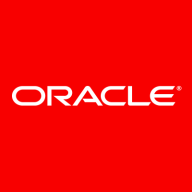

Find out in this report how the two Integration Platform as a Service (iPaaS) solutions compare in terms of features, pricing, service and support, easy of deployment, and ROI.
In a scenario where employing three resources for three months might cost approximately $18,000 to $20,000, Zapier provides substantial cost savings.
The customer support for Oracle Integration Cloud Service is accessible through Service Requests (SR) for unknown problems, with a response expected within 24 hours.
I find the technical support from Oracle to be good.
Their technical support is good; they respond promptly and are very helpful.
This can help if you need assistance, as you can communicate with the community and support system, and most issues are already resolved by AI.
Sometimes, in my early days, when I was stuck with something, they helped me solve these issues, and even helped me solve some of my automations.
Zapier is suitable for small or simpler automation but not for complex ones.
Scaling it gets quite expensive, and while I cannot evaluate it purely from a technology perspective, compared to Workato, I would give Zapier a seven for scalability.
Oracle has provided some fixes, and in my last two to three large engagements, we haven't faced any major challenges with the product.
The reliability of Oracle Integration Cloud Service is strong.
The solution is stable.
In my current company, we had significant challenges with Zapier regarding maintenance, as Zaps were often broken, not necessarily due to Zapier, but due to changes in the input variables.
Setup and deployment can be done in OCI, the Oracle Cloud Infrastructure, allowing for role-based access and configuration, managing access levels for Oracle Integration Cloud Service environments such as Dev, Test, and Production.
The mapping is a bit complex, so configuration is not very easy for a new user.
Most large customers use multiple clouds, and Oracle's partnership with Azure and other hyperscalers needs additional development on the Integration Cloud Service side.
The error message options in the dashboard should be improved. It should be user-friendly so that beginners or non-technical users can figure out the problems and solutions on their own.
You can build similar or dependent automations in one Zap, which helps with understanding the process without switching between different records.
I would appreciate if there would be a feature where we can use actions right after loops. Currently, you cannot use any other action after the loop. Everything needs to be within the loop.
If integration points exceed 30, I recommend that customers use Oracle Integration Cloud Service as it becomes cost-effective with its pay-as-you-use model and multiple available packages.
Oracle Integration Cloud Service's pricing is affordable and reasonable considering its facilities.
The pricing is in accordance with market standards and even lower in some cases.
The pricing of Zapier is slightly higher compared to other market automation tools such as Pabbly, Make.com, and N8N, which have good features but are priced lower than Zapier.
Additionally, it provides a wide variety of built-in adapters for many cloud providers, such as Azure Blob and AWS S3.
Oracle Integration Cloud Service offers capabilities for data customization and validation, handling different date formats, and API calls using REST and SOAP.
It is very easy to integrate, and the pre-built APIs available to connect multiple systems help establish connections faster and more accurately.
They have approximately 7,000 connections.
Even a person with no technical knowledge can use Zapier to create automations.
The automation capabilities are impressive.
| Product | Market Share (%) |
|---|---|
| Oracle Integration Cloud Service | 6.2% |
| Boomi iPaaS | 11.7% |
| Microsoft Azure Logic Apps | 11.5% |
| Other | 70.6% |
| Product | Market Share (%) |
|---|---|
| Zapier | 2.5% |
| AWS Glue | 13.3% |
| AWS Database Migration Service | 10.4% |
| Other | 73.8% |


| Company Size | Count |
|---|---|
| Small Business | 8 |
| Midsize Enterprise | 8 |
| Large Enterprise | 27 |
| Company Size | Count |
|---|---|
| Small Business | 29 |
| Midsize Enterprise | 10 |
| Large Enterprise | 7 |
Oracle Integration Cloud Service is a cloud-based integration tool that seamlessly integrates on-premise applications with Oracle Cloud (SaaS) or other cloud apps (for example, Workday, Salesforce, etc.) to other cloud apps. Oracle’s solution combines all the capabilities of application integration, process automation, visual application building, and integration analytics into a single unified cloud service. The solution offers real-time and batch-based integration, structured and unstructured processes, case management, stream analytics, and integration insight. All of these capabilities together allow users to service all their end-to-end integration needs in one cohesive platform.
Oracle Integration Cloud Service Features
Oracle Integration Cloud Service has many valuable key features. Some of the most useful ones include:
Oracle Integration Cloud Service Benefits
There are many benefits to implementing Oracle Integration Cloud Service. Some of the biggest advantages the solution offers include:
Reviews from Real Users
Oracle Integration Cloud Service is a solution that stands out when compared to many of its competitors. Some of its major advantages are that it has good adapters, is user friendly, and produces a solid ROI.
Rishabh S., Business and Technology Delivery Associate Manager at Accenture, says, “It has good performance, easy integration, is user-friendly, and also has helpful technical support. The dashboard provided by Oracle Integration Cloud for monitoring and error handling is very intuitive. You do not need a third-party dashboard or logging framework when you initiate the integration. There are a lot of adapters, which is what I like the most.”
“The most valuable features of this solution are the SFTP adapters, file adapters, and risk adapters, that we use in everyday projects,” says PeerSpot user Arun N., Technical Manager at a financial services firm.
Kanhaiya C., Solution Architect at Tata Consultancy, explains, "Oracle Integration Cloud Service is a really good product and the ROI is very good with it. It lowers development time. A development cycle that may have taken a year without Oracle Integration Cloud Service can drop down to three or four months with it."
Zapier is a tool for primarily non-technical users to connect together web apps.
An integration between two apps is called a Zap. A Zap is made up of a Trigger and one or more Actions or Searches.
Whenever the trigger happens in one app, Zapier will automatically perform the actions or searches in another app in order.
Zaps are very lightweight and easy to set up. Zaps do not import or export old data (they only operate on new items created after the Zap is enabled). Zaps are also not kept in sync ("two way syncing") after the Zap is triggered.
Zaps are deceivingly simple if you're used to dealing with complex and difficult integrations. Their simplicity is what enables anyone to create them.
We monitor all Integration Platform as a Service (iPaaS) reviews to prevent fraudulent reviews and keep review quality high. We do not post reviews by company employees or direct competitors. We validate each review for authenticity via cross-reference with LinkedIn, and personal follow-up with the reviewer when necessary.